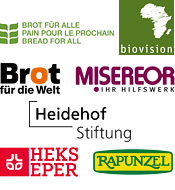News
02.02.2016
Nearly 75% of all glyphosate sprayed on crops in the last 10 years, study
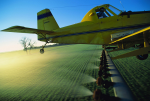
Monsanto’s herbicide glyphosate is now the most widely used weed-killer in history both in the U.S. and worldwide. According to new research to be published in the February edition of the journal “Environmental Sciences Europe”, there has been a dramatic increase in the total volume of glyphosate applied to crops across the globe. The paper, written by Charles M. Benbrook from the Center for Sustaining Agriculture and Natural Resources at Washington State University, reveals that the use of glyphosate has almost increased 15-fold since the introduction of genetically engineered crops in 1996. At global level, the use of glyphosate increased from 113 million pounds in 1995 to 1.65 billion in 2014. In the United States, glyphosate use by farmers even increased 9-fold, from 28 million pounds in 1995 to 250 million pounds in 2014. The paper found that the use has skyrocketed in recent years. Almost 75% of the total volume of glyphosate sprayed world-wide over the last four decades (1974 to 2014) has been applied in just the last ten years. According to Benbrook, “The dramatic and rapid growth in overall use of glyphosate will likely contribute to a host of adverse environmental and public health consequences.” In March 2015, the International Agency for Research on Cancer (IARC), an arm of the World Health Organisation (WHO), classified glyphosate as “probably carcinogenic to humans”. This triggered a bitter row over the safety of the weedkiller, prompting calls from public officials, health experts and consumers worldwide for a ban on the pesticide. “My hope is that this paper will stimulate more research on glyphosate use, and human and environmental exposure patterns, to increase the chance that scientists will quickly detect any problems that might be triggered, or made worse by glyphosate exposure,” Benbrook was cited by EurekAlert. Peter Melchett, policy director at the Soil Association, a British charity campaigning for sustainable food, farming and land use, commented on the paper: “This huge increase in chemical spraying is what we can expect if GM crops are ever grown in England. (…) The research rightly questions the safety of using Glyphosate on crops destined for people to eat just before they are harvested – a growing practice in the UK, which must end.” (ab)
28.01.2016
Saving livestock diversity key to feeding a warmer world, new report
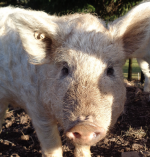
The genetic diversity of livestock can help feeding the world in the face of climate change, yet a substantial proportion of the world’s animal breeds remain at risk of extinction, the UN Food and Agriculture Organisation (FAO) has warned. According to the agency’s second report on the State of the World’s Animal Genetic Resources, increased global efforts are needed to safeguard the existing gene pool and to ensure that animal genetic resources remain available for future generations. “Genetic diversity is a mainstay of resilience and a prerequisite for adaptation in the face of future challenges,” FAO’s Director-General José Graziano da Silva said in the foreword to the report. “For thousands of years, domesticated animals, like sheep, chickens and camels, have contributed directly to the livelihoods and food security of millions of people. That includes some 70 percent of the world's rural poor today,” he added. According to the report, 1,458 of the world’s farm animal breeds, about 17% of the total, are currently at risk of extinction, while the risk status of 58% is simply unknown due to lack of data on the size and structure of their populations. The main reasons for the continuing genetic erosion are cross-breeding, the increasing use of non-native breeds, the decline of traditional forms of production and neglect of breeds considered not competitive enough. Cross-breeding, embraced by countries which import genetic material to increase milk productivity and speed up growth, can lead to loss of valuable characteristics such as the ability to cope with high temperatures, limited water supplies, poor feed or high altitudes. Livestock’s roles in the provision of ecosystem services related to the regulation of ecological functions, landscape management and the provision of wildlife habitats remain under-researched and undervalued, the report says. One example is the Brazilian Pantaneiro cattle, a breed resistant to various parasite-induced diseases. Once common in the country, there are now only 500 pure-bred animals, threatening to erode the breed’s capacity to adapt and survive. However, there has also been some progress since countries and livestock breeders worldwide have increased efforts and established gene banks. The Hungarian Mangalica pig, for example, nearly went extinct when other pig species that produced more meat with less fat replaced it. The total population was down to less than 150 sows in the 1990s but thanks to the work of some breeders, the Mangalitza has been brought back from the verge of extinction. (ab)
26.01.2016
Governments must stop alarming rise in childhood obesity, UN agency
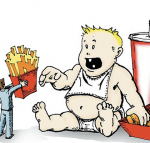
Childhood obesity has reached alarming levels including in developing countries, the World Health Organisation (WHO) warned on Monday. According to figures released by the health agency’s Commission on Ending Childhood Obesity, the number of children under five who are overweight or obese reached 41 million in 2014, up from 31 million in 1990. If current trends continue the number of overweight or obese infants and young children will increase to 70 million by 2025. “Overweight and obesity impact on a child’s quality of life, as they face a wide range of barriers, including physical, psychological and health consequences,” said the Commission’s co-chair, Dr Sania Nishtar. “We know that obesity can impact on educational attainment too and this, combined with the likelihood that they will remain obese into adulthood, poses major health and economic consequences for them, their families and society as a whole,” Nishtar added. Childhood obesity is becoming an increasing problem in the developing world. The number of overweight children in lower middle-income countries has more than doubled between 1990 and 2014, from 7.5 million to 15.5 million. In 2014, 48% of all overweight and obese children aged under five lived in Asia, and 25% in Africa. According to the report, many children are growing up today in environments encouraging weight gain and obesity. Exposure to unhealthy environments is increasing in high-, middle- and low-income countries and across all socioeconomic groups. The experts identified the marketing of unhealthy foods and beverages as a major factor in the increase in numbers of children being overweight and obese. “Increased political commitment is needed to tackle the global challenge of childhood overweight and obesity,” said co-chair Sir Peter Gluckman. The report proposes a set of recommendations aimed at reversing the rising trend. The authors call on governments to promote the intake of healthy foods and reduce the consumption of unhealthy foods and sugar-sweetened beverages by children and adolescents, for example by subsidising healthy foods and implementing fiscal policies, such as taxes to reduce the consumption of unhealthy foods. WHO Director General Dr. Margaret Chan stressed that “the biggest harm comes from the marketing of sugar-rich non-alcoholic beverages and ultra-processed, energy-dense, and nutrient-poor foods, which are often the cheapest and most readily available, especially in poorer communities.” She sad that voluntary initiatives are not likely to be sufficient. “To be successful, efforts aimed at reducing the marketing of unhealthy foods and beverages need support from regulatory and statutory approaches,” she said, underlining that the technical guidance issued by WHO as well as the formulation of public health policies must be “protected from influence by industries with a vested interest.” (ab)
20.01.2016
Public hearing on Monsanto’s patent on conventionally bred Indian melon
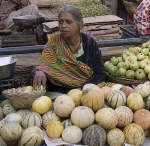
The European Patent Office will hold a public hearing on Monsanto’s patent on a melon derived from conventional breeding. On 20 January, public oral proceedings in opposition will take place at the European Patent Office (EPO) in Munich for European patent EP1962578, which covers virus-resistant melon plants. The melons have a natural resistance to the cucurbit yellow stunting disorder virus that turns melons yellow and reduces yields. Using conventional breeding methods, agrochemical giant Monsanto introduced a gene from another melon plant. This gene was already found in a melon plant in India that was catalogued in 1961 and has been publicly available since 1966. The patent application was filed in 2006 and the patent became effective in 2011. “Monsanto’s melon patent is biopiracy at its most devious. First of all, the patented resistance was not invented by Monsanto – just discovered in an Indian melon. Monsanto is now pretending to be the first to have bred it into other melons – but to copy something is not an invention”, says Francois Meienberg from The Berne Declaration. The patent covers the modified plant, parts of the plant and its fruits and seeds, but not the breeding process itself. Opposition to Monsanto’s melon patent also comes from India’s National Biodiversity Authority: “The actions of Monsanto in using Indian melon varieties in research and development with commercial intent including application of a patent based on Indian melon varieties amounts to a blatant violation of Section 3 and 6 of the Biological Diversity Act,” the authority wrote in a letter to Monsanto already in 2012. The melon patent is not the first patent granted by the EPO on plants and animals derived from conventional breeding. In October, Swiss agrochemical giant Syngenta was granted a patent on a seedless pepper derived from conventional breeding. In December, its Technical Board of Appeal confirmed a patent on the conventionally bred “wrinkled tomato” that has a reduced water content. Research by “No Patents on Seeds!”, a coalition of more than 200 organisations, shows that in 2015 around hundred new patent applications were filed. These patents concern carrots, potatoes, maize and other plants. Amongst the applicants are big companies such as Bayer, Dupont/Pioneer and Monsanto. In total, around 1400 patent applications on conventional breeding are pending with around 180 already granted by the EPO. This has been heavily criticised by non-governmental organisations. They warn that food production is becoming increasingly dependent on just a few big international companies. Nevertheless, EPO’s Enlarged Board of Appeal ruled in March 2015 in a decision on the precedent cases of broccoli and tomato, that plants obtained by essentially biological processes are patentable even though European Patent Law does not allow patents on the conventional breeding of plants and animals. (ab)
18.01.2016
Richest 62 people own as much as half the world's population combined

Global inequality is reaching new extremes with the world’s richest 62 people owning as much as the planet’s poorest half put together, new research shows. The report “An Economy for the 1%”, published by Oxfam ahead of the annual gathering of the world's financial and political elite at the World Economic Forum in Davos, Switzerland, found that the wealth of the poorest 3.5 billion people has fallen by a trillion dollars since 2010. This 41% drop occurred although the world population increased by 400 million people during that period. At the same time, the wealth of the richest 62 people has increased by more than half a trillion dollars to $1.76 trillion, an increase of 44%. Oxfam’s calculations are based on the Forbes’ billionaires list. According to these figures, the number of people whose wealth is equal to that of the poorest half of the world’s population is getting smaller each year, down from 388 in 2010 and 80 people last year. “It is simply unacceptable that the poorest half of the world’s population owns no more than a few dozen super-rich people who could fit onto one bus,” Oxfam's International Executive Director, Winnie Byanyima, said in a press release. “The richest can no longer pretend their wealth benefits everyone – their extreme wealth in fact shows an ailing global economy. The recent explosion in the wealth of the super-rich has come at the expense of the majority and particularly the poorest people”, Byanyima added. Although the number of people living in extreme poverty halved between 1990 and 2010, the average annual income of the poorest 10% has risen by less than $3-a-year in the past 25 years, an amount equivalent to an increase in individuals’ daily income of less than a single cent per year. The report also shows how women are disproportionately affected by inequality. Oxfam says urgent action is needed to tackle the inequality crisis if the Sustainable Development Goal of eliminating extreme poverty by 2030 is to be met. A precondition for this is that governments are able to collect the taxes they are owed from companies and rich individuals. The organisation therefore calls for an end to tax havens which is fuelling economic inequality and preventing hundreds of millions of people lifting themselves out of poverty. According to Byanyima, “We cannot continue to allow hundreds of millions of people to go hungry while resources that could be used to help them are sucked up by those at the top.” (ab)
14.01.2016
Thousands march against Monsanto corn processing plant in Argentina
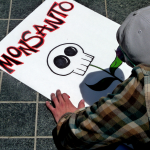
Thousands of protesters in Argentina took to the streets of Buenos Aires last Friday to protest against agrochemical giant Monsanto and the construction of a new corn processing plant in the rural town of Malvinas Argentinas close to Córdoba. Protesters marched in support of an activists’ camp which is blocking the property following news that an eviction notice was issued by the authorities on December 30. Protests also took place in other major cities across Argentina. Demonstrators marched with drums or held banners reading “Monsanto get out” or “Stop pesticide spraying”. They also wore gas masks to symbolise the dangers people are suffering from the widespread use of pesticides. According to activists, the province of Cordoba where Monsanto wants to build the world’s biggest maize seed treatment plant for genetically modified seeds is suffering an environmental emergency. Since 2013, they have maintained a blockade of the construction site preventing the entry of building material and fuel. In 2014, a provincial court ruled that the municipal ordinance authorising construction of the plant was unconstitutional. It ordered a halt to construction works and banned the Malvinas Argentinas municipality from allowing the construction until an environmental impact assessment and a public hearing were carried out. The recent eviction notice to remove the protesters, stating that Monsanto must have “free passage” to the property, was temporarily suspended on January 7. “Monsanto has for a long time been attempting to install itself in areas illegally, where court decisions have previously blocked the development plan, and has failed with all its political pressure to win a legal method to install its project," environmental lawyer Enrique Viale told RT. The movement against the corn processing plant is part of a larger protest against the cultivation of genetically modified crops in Argentina and the use of Monsanto’s agrochemicals. Argentina is the world’s largest soybean producer. Genetically modified soybeans are currently grown on more than 20 million hectares, mostly for export to China and Europe. In 2012, 335 million litres of pesticides were sprayed on Argentinean fields, almost nine times as much as in 1990. Glyphosate, a herbicide marketed by Monsanto under the trade name Roundup, is now the most widely used agrochemical in Argentina. Spraying is often carried out from the air on land near residential areas, causing problems of drift and health problems. In farming communities, cancer rates are often two to four times higher than the national average and people are suffering from respiratory and skin diseases. Children are frequently born with birth defects and malformations. But the widespread pesticide use is not only causing health concerns: "Biodiversity is affected negatively when 15 million inhabitants of the country use hundreds of millions of litres of glyphosate,” said Luis Zamora, a former candidate for Buenos Aires Mayor, who attended the protest march. (ab)
11.01.2016
Drought and heat hit global cereal production harder since 1980s, study shows
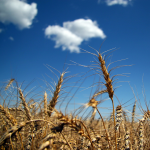
Drought and extreme heat waves dramatically reduced crop yields during the second half of the 20th century and will likely pose a serious threat in the coming decades, according to new research published in the journal Nature. The scientists found that drought and extreme heat slashed cereal harvests by 10% and 9% respectively between 1964 and 2007, while extreme cold events and floods had no significant impact on crop harvests. “We have always known that extreme weather causes crop production losses,” says senior author Navin Ramankutty, a food security professor at the University of British Columbia in Canada, “But until now we did not know exactly how much global production was lost to such extreme weather events, and how they varied by different regions of the world.” The researchers analysed national production data from the Food and Agriculture Organisation for 16 cereals in 177 countries and also examined the effects of about 2,800 international weather disasters from 1964 to 2007. They found that the impact of droughts on cereals like corn, rice and wheat increased in recent decades: From 1985 to 2007, droughts caused cereal production losses averaging 13.7%, up from 6.7% for the period from 1964 to 1984. Almost 3 billion tonnes of crops have been lost since 1964, about three years of global maize harvests. The results also highlight 8–11% more damage in developed countries than in developing ones. Production levels in the more technically advanced agricultural systems of North America, Europe and Australia dropped by an average of 19.9% because of droughts – roughly double the global average. “Across the breadbaskets of North America, for example, the crops and methods of farming are very uniform across huge areas, so if a drought hits in a way that is damaging to those crops, they will all suffer,” said first author Corey Lesk from McGill University. “By contrast, in much of the developing world, the cropping systems are a patchwork of small fields with diverse crops. If a drought hits, some of those crops may be damaged, but others may survive.” The authors of the study say the research provides key insight on the effects of climate on agriculture and may help to guide agricultural priorities in international disaster risk reduction and adaptation efforts. While farmers in wealthier countries, who rarely depend on harvests directly for food and have access to crop insurance, could opt for the strategy of maximising yields, running this risk could have disastrous results for farmers in developing countries. (ab)
06.01.2016
Venezuela passes new seed law banning genetically modified crops
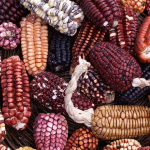
Venezuela has passed a new seed law, imposing a strict ban on genetically modified organisms (GMOs). On December 23th, the National Assembly of Venezuela approved the “Ley de Semillas” in its final session before the new opposition coalition took over on January 5th . The law was promptly signed by Venezuela’s President Nicolas Maduro. It regulates the production of hybrid seeds in Venezuela and prohibits the production, distribution and import of genetically modified seeds as well as GMO research. A central body will be established to implement the law and sanction violations, with a focus on the protection of traditional seeds, teleSUR reported. The legislation also makes an emphasis on the “protection of indigenous, African, campesina, and local seeds, which represents a benefit for our biological diversity and consolidates our food security and sovereignty,” said Venezuela’s Vice-President Jorge Arreaza. The law promotes the free exchange of seed and opposes the conversion of seed into intellectual or patented property or any other form of privatisation. Article 2 of the law states the broader goal of promoting “the transition from conventional systems of production based on monoculture and the use of agrochemicals with agro-industrial and/or corporate seed for conventional use, to an agroecological system and the preservation of the environment in the short, medium and long term, based on agro-biodiversity.” On his television show in December, President Maduro said the new Seed Law provides the conditions to produce food “under an agro-ecological model that respects the pacha mama [mother earth] and the right of our children to grow up healthy, eating healthy.” The approval of the law came after three years of debates but its implementation could prove difficult as the newly elected opposition coalition “Roundtable of Democratic Unity” won a two-thirds majority in the National Assembly. (ab)
04.01.2016
Soil degradation is a major threat to food security, report warns
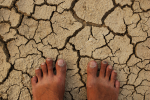
Global soil degradation costs up to 10.6 trillion US dollars a year and poses a long-term threat to food security and the environment, according to a report published by the Sustainable Food Trust (SFT) in December. The report argues that soil degradation should be recognised alongside climate change as one of the most pressing problems facing humanity. Soil is a vital resource for food production that needs to be protected and enhanced, the report said. Instead, more than half (52%) of all fertile, food-producing soils globally are now classified as degraded, many of them severely, largely due to inappropriate farming methods. This reduces the ability of farmland to produce food at a time when more will be demanded of soils than ever before due to population increase and climate change, the authors warns. More than 95% of the food we eat depends on soil. “Few people think about soil when they do their shopping, in part because most root vegetables have all the soil washed off them these days, but the reality is that for every trolley of food we wheel back to our cars, we are tipping three trolleys full of the same weight of soil into the river to be washed away,” Sustainable Food Trust policy director Richard Young said in a press release. He argues that “urgent action is now needed to develop common solutions which address climate change and soil degradation simultaneously”. According to SFT, soil degradation is potentially reversible through planned ecosystem restoration and by introducing agricultural systems and practices that regenerate soil by building fertility and increasing biological activity and soil organic carbon. The report quotes farming practices such as crop-grassland rotation, hedgerow planting and animal manure application as methods to halt soil degradation and increase soil carbon. The report concludes that soil health should be given a central position in decisions made to combat climate change and that it needs to be recognised as a vital resource for the future of humanity. (ab)
28.12.2015
Decline in wild bee population threatens U.S. crop production, new study
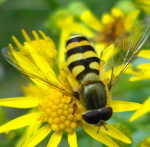
Wild bees are on the decline in many important agricultural regions of the United States, a trend that will increase costs for US farmers and may even destabilise crop production over time, a new study warns. According to the first national map of bee populations, published in the journal Proceedings of the National Academy of Sciences, wild bee abundance in the US decreased by 23% between 2008 and 2013. A research team identified 139 counties in key agricultural regions of California, the Pacific Northwest, the upper Midwest and Great Plains, west Texas and the southern Mississippi River valley that have the most worrisome mismatch between falling wild bee supply and rising crop pollination demand. “Until this study, we didn’t have a national mapped picture about the status of wild bees and their impacts on pollination,” says Insu Koh, a researcher at the University of Vermont’s Gund Institute for Ecological Economics. The new nationwide assessment comprises 39% of the pollinator-dependent crop area in the United States. These counties grow crops such as almonds, pumpkins, squashes, blueberries, watermelons, peaches and apples that are highly dependent on pollinators. “These are the crops most likely to run into pollination trouble – whether that’s increased costs for managed pollinators, or even destabilized yields,” says Taylor Ricketts, director of the Gund Institute. But the study also mapped counties that grow less-pollinator-dependent crops including soybeans, canola and cotton. Wild bees are important pollinators; in the U.S. alone there are at least 4,000 species of wild bees. Along with managed honey bees, they ensure stable pollination to agriculture and wild plant communities. According to estimates, these pollination services contribute over $3 billion to the U.S. agricultural economy each year. But pesticides, climate change and diseases are threatening wild bees. The new study shows that their decline may also be caused by the conversion of natural bee habitat into cropland. In 11 key states with declining bee populations, the amount of land tilled to grow corn increased by 200% in five years, replacing grasslands and pastures that once supported bee populations. The authors blame the increased demand for corn in biofuel production for the destruction of bee’s natural habitats. “By highlighting regions with loss of habitat for wild bees, government agencies and private organizations can focus their efforts (…) to support these important pollinators for more sustainable agricultural and natural landscapes,” said Rufus Isaacs, one of the co-authors on the study. The study followed a 2014 memorandum by President Barack Obama creating a task force to study pollinator losses. (ab)
